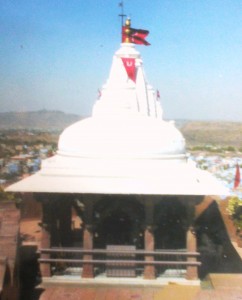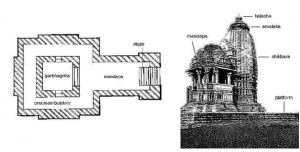The Hindu Temple & their Vastu by Dr. Jitendra Vyas
 The Hindu temples commonly known as Mandir in Hindi and derived from the Sanskrit word Mandira, are identified by several names in different parts of India as koil or kovil in Tamil, devasthana in Kanada and devalaya, in Telugu etc. In general Hindu temple structure can either be isolated structure or a part of complex. In this Blog I have given you the general knowledge Temple Vastu .
The Hindu temples commonly known as Mandir in Hindi and derived from the Sanskrit word Mandira, are identified by several names in different parts of India as koil or kovil in Tamil, devasthana in Kanada and devalaya, in Telugu etc. In general Hindu temple structure can either be isolated structure or a part of complex. In this Blog I have given you the general knowledge Temple Vastu .
The character of Hindu temples reflected local architecture styles and the material and skills to which they related. The main forms and styles of the Hindu temple were established during 600-800 AD. The cell or shrine, the garbhagriha (usually square in plan), housed the image and was approached through a columniated porch or mandapa. The shrine was roofed with a pyramidal spire or vertically attenuated dome like structure known as sikhara. The temple as a whole was raised on a massive plinth and was often surrounded by subsidiary shrines and by an enclosing wall pierced by one or more gigantic gateway towers or gopurams. It is the outline and detailing of the sikhara and other roof-forms which determine the character of monumental Hindu architecture and give a formal as opposed to historical basis for it classification.
The architecture of temples varies across India, however while the basic elements of the temple are the same, the form and scale varied. For example as in the case of the architectural elements like Sikhara (pyramidical roofs) and Gopurams (the gateways).
This following section describes the evolution of the temple and the development of their architectural styles along their materials of construction.
Elements of Hindu temple :-
It was the later half of the 7th century that the Hindu temple structures of India began to acquire a definite form (Fletcher,1952). Similar to terminology used to distinguish the basic components of a Gothic Church (for example nave, aisles, chancel, spire, etc), the common elements of a Hindu temple which are known in their original Sanskrit words are as follows:
The sanctuary as whole is known as the Vimana that consists of two parts. The upper part of the Vimana is called as the Sikhara and the lower portion inside the Vimana is called as the Garbhagriha (cella or inner chamber).
Figure 1 Figure 2
Figure 1 & 2 – The typical plan and the typical elevation of a Hindu temple illustrating various elements
- ‘Sikhara’ meaning the tower or the spire. It is the pyramidal or tapering portion of the temple which represents the mythological ‘Meru’ or the highest mountain peak. The shape and the size of the tower vary from region to region.
- ‘Garbhagriha’ meaning the womb chamber. It is nucleus and the innermost chamber of the temple where the image or idol of the deity is placed. The chamber is mostly square in plan and is entered by a doorway on its eastern side. The visitors are not allowed inside the garbhagriha in most of the temples, only the priests perform the rituals and worship.
- ‘Pradakshina patha’ meaning the ambulatory passageway for circumambulation. It consists of enclosed corridor carried around the outside of garbhagriha. The devotees walk around the deity in clockwise direction as a worship ritual and symbol of respect to the temple god or goddess.
- ‘Mandapa’, is the pillared hall in front of the garbhagriha, for the assembly of the devotees. It is used by the devotees to sit, pray, chant, meditate and watch the priests performing the rituals. It is also known as ‘Natamandira’ meaning temple hall of dancing, where in olden days ritual of music and dance was performed. In some of the earlier temples the mandapa was an isolated and separate structure from the sanctuary.
- ‘Antarala’ meaning the vestibule or the intermediate chamber. It unites the main sanctuary and the pillared hall of the temple.
- ‘Ardhamandapa’ meaning the front porch or the main entrance of the temple leading to the mandapa.
- ‘Gopurams’ meaning the monumental and ornate tower at the entrance of the templecomplex, specially found in south India.
- ‘Pitha’ , the plinth or the platform of the temple.
- ‘Toranas’, the typical gateway of the temple mostly found in north Indian temple and
- The Amalaka the fluted disc like stone placed at the apex of the sikhara.
Blog No. 37, Date: 4/79/2015
Contact: 09928391270,
dr.jitendra.astro@gmail.com, pandit@drjitendraastro.com


